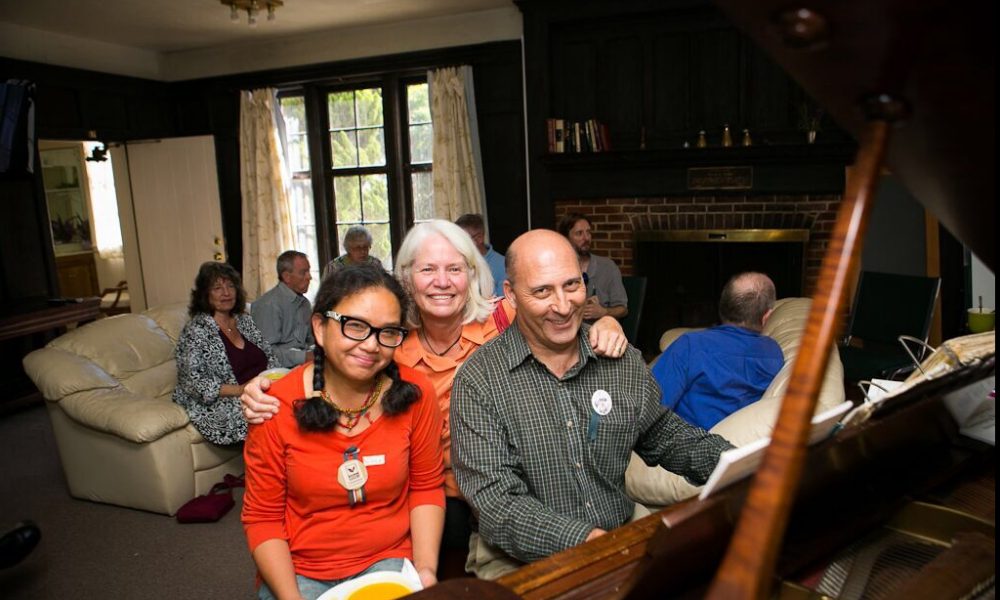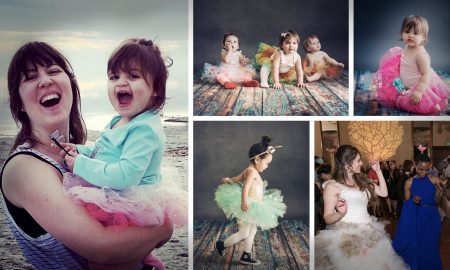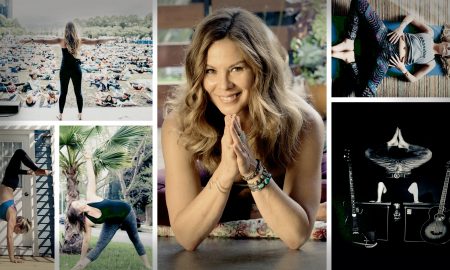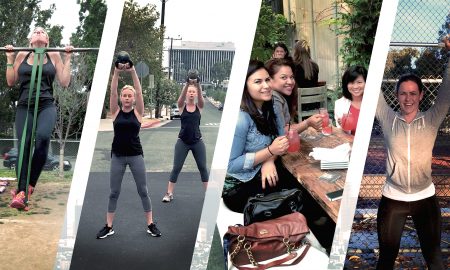

Today we’d like to introduce you to David Cutter.
So, before we jump into specific questions about the business, why don’t you give us some details about you and your story.
I’ve grown up as a pianist in a very unconventional way compared to other pianists. I quit my childhood piano lessons at age 6 and didn’t start again until age eighteen. At that time I refused to take any lessons and only learned songs from recordings. I spent six hours a day doing this, for five years. I finally realized how limiting this was.
Then I decided it was time to study the piano and college seemed like the best place to do that. Despite being completely unprepared, I was able to study privately with one of the piano faculty. Long story short, I auditioned and got into one of the top performance oriented colleges in the country. I spent over three years at this college.
With a full-time load of classes and practicing eight hours a day. I was having so much fun that one day I practiced eleven and a half hours. I also started studying jazz improvisation and big band arranging. After three years I left college to go on tour with a working band.
Upon returning to Los Angeles, I continued to work in a variety of working ensembles around southern California. For many years, I performed both classical music and jazz regularly at many venues. I accompanied dinner theater and improvisational comedy groups. I was a solo pianist at many hotels including the Los Angeles Biltmore. During this time I was also a full-time high school teacher. I also managed to meet, fall in love and marry a lovely woman named Karen. This was the best thing to have ever happened to me. I had always been a quiet, shy type and my relationship with Karen did a lot to wake me up emotionally. Life continued on for many more years until I had a life changing medical issue.
This serious and sudden medical condition, a retinal tear with complications that almost blinded me, put me on sick leave where I realized I wasn’t doing work I really loved and over many years, I felt I was in danger of dying a slow emotional death. The medical issue got resolved mostly and looking back on it, I have to say, it was the second best thing that ever happened to me. I quit my high school position and started rounding up piano students. During the first two years of my piano teaching, a colleague of mine announced one day that another teacher was having a recital for his students and that there was a special “technique” he was using. When I heard his students play, I was drawn to a “layering” of sound coming from one person at one piano. His student’s playing had a depth and richness to it which was unusual given that these were young children. I could tell there was something different about what I was hearing but I couldn’t put a name on it.
It was this lucky happenstance that resulted in my falling into the orbit of an amazing, internationally recognized piano professor. The teacher I had come to observe was a student of a student of this professor. The teacher described the “technique” to me and I thought it sounded outlandish How could I have not heard of this before? Despite my thinking mind, I did know I was hearing something and based only on that, I started taking lessons from this teacher. I gave his assignments about twenty minutes of practice a day, at first. By the end of a month, I had discovered an element of control over the piano I had never experienced before. After a couple of years, I went to the source and called the aforementioned internationally known piano professor. After some back and forth, she invited me to attend one of her piano teacher courses.
Professor N. Jane Tan taught these piano courses internationally. A course was a year long series of private one on one piano lessons with Professor Tan. These lessons would take place in front of other teachers that were also enrolled in the class. This was a powerful format because a teacher got all the benefits of a private lesson but then got to watch the other “students” go through their individual lessons. Professor Tan would demonstrate to the observing “students” how to fix particular problems that the lesson “student” was having. I was lucky enough to be invited into two of these courses over a period of almost three years.
It’s been two years since I had my last lesson with Jane and I have been exploding with breakthroughs ever since. Aspects of playing the piano that I have struggled with for decades are just coming out of my fingers like magic. I know it’s the result of lots of focused hard work but it still feels like magic.
Now, eleven years since I started teaching piano, almost every day I get to perform and work with students. Despite a full schedule and a waiting list, I now see a way to have a much larger impact on piano education. I realize there’s a deep reason why most piano students quit and I see a solution to this problem.
Has it been a smooth road?
I would say my experience was more of the bumpy road variety. While I can’t believe how well it has worked out, I would not recommend that anyone try this the way I did.
When I look back over the last forty years since I was learning songs by ear, I’m really struck by how many twists and turns there have been and the unpredictable nature of it all. This is about as far from having a plan as one can be. Yet, who I am and what I’m doing now feels so good and right that, it seems I must have had a plan.
Also, I am humbled by how much good luck I had. Even some of the bad luck has turned out well. I think things worked for me for two principle reasons. First, is the example my mother set. She was a painter who started as an adult. She studied with some famous teachers and then practiced for twenty years. Only at that point did she start to sell her work. Second, I’m really a stubborn person. Despite people telling me, “you’re never going to amount to anything”, I kept working at it. That is the secret for anything, but especially for the piano.
When I was in college, I was really struggling. Because of my by ear playing, my ability to read music was so slow. It was faster to just memorize each piece measure by measure. My faculty piano teacher said, “you’re going to spend the rest of your life catching up”. She was absolutely right. I could have gotten so much more from my college experience had I been a functioning sightreader of music.
I took away a lot from that college experience, however, and then I spent the next thirty years catching up. I took private lessons for twenty years with top LA-based jazz pianist, Terry Trotter. I studied sightreading in private lessons with a well-known studio musician and conductor, Joseph A. Valenti. Most importantly, I kept practicing, every day, for all of those thirty years. I’m still catching up now, but having a lot of fun doing it.
At a low point, right before I quit teaching high school, I was practicing less than an hour a day. In college, I was doing eight. Even teaching high school full time, I was still practicing two hours a day. I suppose I might have even quit because of the “emotional death” I was starting to experience at that point. Turns out my medical problem was a actually a life saver. Let’s just say the bumpy road has become much smoother.
Mine is the quintessential story of being in the right place at the right time. Despite good and back luck, I’ve come to believe that because I’ve worked so hard, the “universe out there” knows what I’m doing, it cares and when the time is right miracles happen.
So let’s switch gears a bit and go into the David Cutter Piano story. Tell us more about the business.
There are several things that I do that are special, even bordering on unique. I’ve come to realize that I need to get a student to some artistic expression as quickly as possible. Artistry is, I believe, the gateway to self expression. I would guess that over ninety percent of piano students quit at some point because their self expression is limited by not having been adequately trained to play. I teach the artistry not by talking about it. I demonstrate to students how they should move to create an artistic sound at the piano. Then I tell the student to mimic my motions.
In the very first lesson, I teach two wrist “gestures” that allow the student to move in ways that one could describe as artistic. It’s these motions that allow for more advanced playing especially once they are mastered. I even have an easier way to learn the dreaded scale fingerings in all keys.
One aspect of my practice that I’m known for is ensemble playing. A piano ensemble is any number of pianists playing together. I use music arranged by Professor Tan mostly and that music calls for five pianists. Imagine ten hands playing five pianos and you have a piano orchestra. Currently, I direct three different groups of students. Two adult groups and one for young children. I’ve observed that students progress much more quickly than they would without the ensemble experience. They also rapidly gain a more spontaneous musicianship, have lots of fun and are social with other pianists. I can see that in working together to shape the ensemble’s sound, students also experience artistry and are much less likely to quit.
I was very lucky when I first started directing ensembles to be able to rehearse at a store owned and operated by Steinway and Sons called “The Steinway Piano Gallery” in West Hollywood. The manager allowed me to roll five Steinway grand pianos together in a circle. The sound of these pianos in that high ceilinged showroom, was stunning. I have an audio clip of that sound on my website at www.piano-la.com
There are many reasons why ensemble work should be a part of any piano student’s weekly schedule. The main one is that it is a gateway to that goal of self expression. Other benefits include learning to create beautiful tone and learning to shape a phrase. Shaping the phrase together is the difference between the sound of one ensemble versus five pianists playing in the same room. Finally, a rare thing for pianists, is to get to enjoy the piano as a social experience.
I really enjoy performing and I normally get paid for it but I recently had another idea that I think truly sets me apart from other piano teachers. I call it “Piano a la Carte”. Would you believe a piano on wheels? Pulled by a single electric bicycle? The idea was to head down to Old Town Pasadena and play some “pie-anna” on the sidewalk. Besides being fun, it would be free advertising. I have a couple additional reasons having to do with my sustainability activism. When I’m riding down the street towing a piano, even without a sign saying so, it’s a pretty strong message…. Hey, reduce your carbon footprint!
I’ve been a sustainability activist for many years now and I’ve seen art make an impact where words don’t. By playing piano on the sidewalk, I’m hoping to figure out how to connect with people over an elemental aspect of being human. The ability to respond to art. What was it that made prehistoric humans do cave art? I believe that urge is inside all of us, even though the form might vary from person to person, Be it dance, visual art or music, all people seem to respond best to a difficult message, when it comes packaged as art.
I’m most proud of my ensemble program. It’s so rare for piano students to get this kind of opportunity. The vast majority of piano students sit at home, alone, practicing. I see now how I can make ensembles more available by creating an ensemble rehearsal studio with five of the finest quality grand pianos. With an independent calendar, the ensemble studio can be available even if I’m not. The wider community of teachers, hobbyists and students in Southern California can create their own groups and rent the studio anytime, seven days a week. These high quality pianos would then inspire pianists, both teachers and students, to strive for excellence and in this way, discover the artistry in playing piano and a lifetime of musical enjoyment.
How do you think the industry will change over the next decade?
Piano teaching as it exists now is about hundred and fifty years old. The traditional music lesson goes back earlier than that even. I would say that broadly speaking very little is changing. Like music notation, the music lesson is a structure that has been around long enough to be a very stable platform. Loosely speaking, I would say that over this long time period, there has been a steady, imperceptible decline in quality that mirrors the rest of our society.
There are a couple of more recent cosmetic trends that are due to technology. The teacher associations are very big on pushing technology generally. My personal feeling is that while there are useful things technology can do, it’s very easy to fall into the technological trap of being separated from a more direct connection to your work. In other words it’s easy for the tech to get in the way. Regardless technology is getting more popular. Here are two examples of technology that are trending. It’s getting very useful to use a student’s iphone ( or teacher’s camera) to record video of the teacher demonstrating a technique. The student can refer to the video during the week to see what to practice. There are lots of other possible uses for this technology.
Another trend is a distance learning type of experience. If you want to study with a teacher who doesn’t live near by, you can skype a lesson, if that teacher is willing. Skype is really substandard in it’s smoothness, but I know there are some teachers who do that. Other teachers have a very elaborate and high speed set up that allows a much smoother experience. In September, 2016, The Yamaha Corporation produced an event with world famous concert pianist Mr. Byron Janis in New York, giving a master class to students at the Moscow Conservatory. Both Yamaha and Steinway have developed what used to be called player pianos for the digital age. These pianos can be connected to a computer and hence the internet. Pneumatic systems in the piano can be activated by the computer.
The result was that Mr. Janis could play his piano in New York and the piano in Moscow would play, by itself, exactly how Mr. Janis played in New York, in real time. I have not seen this in person but there is a two-minute online video of it and I have to say I was not impressed by the video. While the idea sounds cool, the expense alone must be prohibitive. I personally have no interest in teaching a student who is not in the room with me. I would be limited by that.
Any announcements?
Yes. I would like to announce that as a first step toward realizing my vision of a high quality ensemble studio, I will be releasing a free e-book. The title is Artistry: How Do We Keep Piano Students From Quitting that can be accessed here: www.piano-la.com/ebook.html
Contact Info:
- Website: www.piano-la.com
- Phone: (626)260-1615
- Email: [email protected]




















